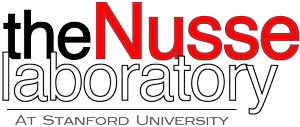Differentiation-dependent expression of provirus-activated int-1 oncogene in clonal cell lines derived from a mouse mammary tumor.
Submitted by admin on Thu, 10/14/2010 - 22:44
| Title | Differentiation-dependent expression of provirus-activated int-1 oncogene in clonal cell lines derived from a mouse mammary tumor. |
| Publication Type | Journal Article |
| Year of Publication | 1990 |
| Authors | Schuuring E, van der Leede BJ, Willems R, Daams H, van der Valk M, van de Vijver M, van Leeuwen F, Sonnenberg A, Nusse R |
| Journal | Oncogene |
| Volume | 5 |
| Pagination | 459–465 |
| Date Published | Apr |
| ISSN | 0950-9232 (Print); 0950-9232 (Linking) |
| Abstract | The int-1 mammary oncogene is frequently activated by proviral insertion in mouse mammary tumors. To characterize the target cell for the oncogenic action of int-1, we have isolated permanent cell lines with distinct morphologies and differentiation characteristics, starting from a tumor with a rearranged int-1 gene. Polygonal cells had retained many differentiation markers of epithelial cells and produced adenocarcinomas upon transplantation in syngenic mice. Sphere-forming-cuboidal cells are poorly differentiated and produced anaplastic tumors. Cuboidal and elongated cells were negative for epithelial markers. Cuboidal cells were poorly tumorigenic, but elongated cells produced highly malignant sarcoma-like tumors. In all lines, the int-1 gene was identically rearranged due to insertion of proviral DNA of the Mouse Mammary Tumor Virus, but the expression of int-1 varied with the state of differentiation of the cells. Polygonal cells contained relatively high levels of int-1 RNA, which were not influenced by steroid hormones. In the sphere-forming-cuboidal cells, expression of int-1 was low but inducible by dexamethasone. In the cuboidal and elongated cells no expression of int-1 was detectable, showing that the continued expression of int-1 was not required for progression to more malignant cells. By immunoprecipitation, two int-1 protein species, of 42 and 40 kD were identified in polygonal and in sphere-forming-cells but not in the culture media. |
